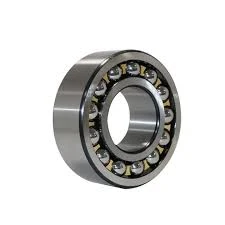
Dec . 12, 2024 10:45 Back to list
bearing thrust ball
Understanding Bearing Thrust Balls A Comprehensive Overview
Bearing thrust balls are crucial components in various mechanical systems, playing an essential role in providing support and stability under axial loads. They are specifically designed to handle thrust (axial) loads, which differ from radial loads that traditional ball bearings typically manage. This article delves into the intricacies of bearing thrust balls, their applications, design, advantages, and maintenance practices.
What Are Bearing Thrust Balls?
Bearing thrust balls are specialized rolling elements designed to accommodate axial loads between two or more surfaces. Unlike standard ball bearings that primarily support radial loads, thrust ball bearings facilitate the smooth rotation and positioning of components subjected to axial forces. They consist of a set of balls positioned between two grooved washers the thrust washer (which engages with the ball) and the housing washer (which secures the assembly within the machine).
There are two main types of thrust ball bearings single-direction and double-direction. Single-direction thrust ball bearings can support axial loads in one direction, while double-direction thrust ball bearings are capable of accommodating axial loads in both directions, providing greater flexibility in applications requiring bidirectional movement.
Design and Construction
The design of thrust ball bearings is critical to their functionality and performance. Generally, the bearing's components are made from high-quality materials such as steel or ceramic, chosen for their strength, wear resistance, and ability to withstand high temperatures. The balls themselves are often treated through processes like heat treatment or surface hardening to enhance their durability.
One of the key aspects of thrust ball design is the raceway geometry, which is meticulously engineered to ensure uniform contact and load distribution among the balls. Proper lubrication is vital for reducing friction, wear, and overheating, which can significantly impact operational efficiency and longevity. Common lubricants include greases and oils tailored for specific conditions and temperatures.
Applications of Bearing Thrust Balls
Bearing thrust balls are widely used in various applications, where axial load support is necessary. Common industries and applications include
1. Automotive In vehicles, thrust ball bearings are often found in clutches, transmissions, and steering systems, ensuring smooth operation and handling of forces during driving.
2. Aerospace Thrust ball bearings are critical in aerospace applications, where they provide reliability and stability for various components, including wing flaps and landing gear.
3. Industrial Machinery In manufacturing equipment, thrust ball bearings can be used in gearboxes, conveyor systems, and pumps, helping to manage heavy axial loads and facilitate smooth operations.
bearing thrust ball

4. Home Appliances Many household appliances, such as washing machines and dryers, utilize thrust ball bearings to optimize performance by balancing axial forces during their operation.
Advantages of Bearing Thrust Balls
The advantages of thrust ball bearings are numerous. They primarily offer
1. High Load Capacity Thrust ball bearings can handle significant axial loads, making them ideal for heavy-duty applications.
2. Space Efficiency Their compact design allows for easy integration into tight spaces, maximizing efficiency in mechanical assemblies.
3. Reduced Friction With proper lubrication, thrust ball bearings present low friction levels, improving energy efficiency and extending the lifespan of the components.
4. Versatility Their ability to function in both single and double-direction applications makes thrust ball bearings versatile components across multiple industries.
Maintenance and Care
To ensure the longevity and optimal performance of thrust ball bearings, regular maintenance is essential. Key practices include
1. Regular Inspection Routine checks for wear, damage, and lubrication levels can prevent premature failure.
2. Proper Lubrication Maintaining the right type and amount of lubricant minimizes friction and protects against corrosion.
3. Temperature Control Keeping operating temperatures within recommended limits is critical to preventing thermal degradation of materials.
In conclusion, bearing thrust balls play a vital role in modern mechanical systems, providing essential support for axial loads across various applications. With their robust design, versatility, and efficiency, they are indispensable in industries ranging from automotive to aerospace. By understanding their function and performing regular maintenance, users can ensure reliable and long-lasting performance of these critical components.
Latest news
-
Premium Deep Groove Ball Bearings | High Speed & Reliability
NewsAug.29,2025
-
Durable Scaffolding Clamps - Secure & Reliable Tube Connectors
NewsAug.28,2025
-
Common Failures in Thrust Ball Bearings and Solutions
NewsAug.22,2025
-
How Tapered Roller Bearings Can Take Shock Loads
NewsAug.22,2025
-
Angular Bearings in High-Precision Spindles
NewsAug.22,2025
-
The Impact of Misalignment on Cylindrical Roller Bearing Performance
NewsAug.22,2025
